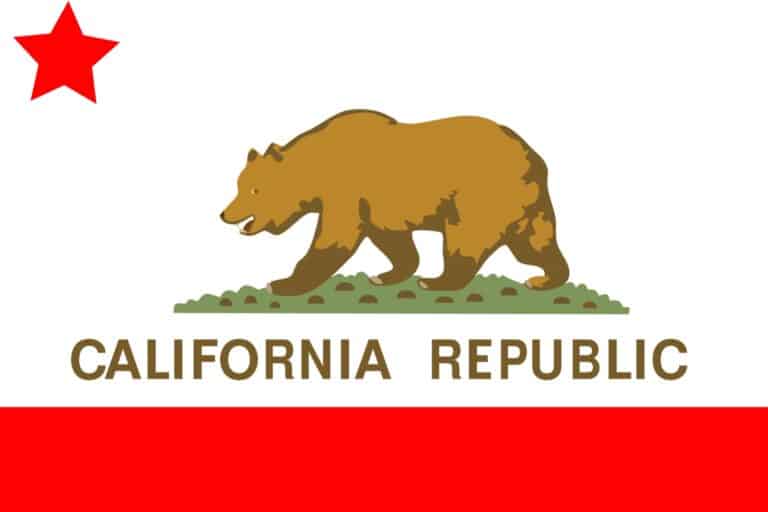If you’re on a homestead and living off the grid you’re going to need a water supply. Now, if you’ve got a lake or pond on your property that’s one source but they will likely have some nasty bacteria that will make you very sick.

Killing these bacteria can often be done by boiling the water, but another alternative is to collect rainwater. It’s cool, and fresh, and will keep you hydrated, but not all states allow it.
So, is it illegal to collect rainwater in California?
No, it isn’t illegal to collect rainwater in California. As long as the rainwater is coming off your roof and it doesn’t end up going into a state water supply like a stream, you can collect it.
It was illegal prior to the passing of the Rainwater Capture Act in 2012.
The Legal Restrictions around Collecting Rainwater in California
As far as legal restrictions go, the federal government doesn’t really have any when it comes to rainwater harvesting.
Instead, it’s left up to each state to govern the practice and while most states encourage rainwater harvesting, it isn’t entirely legal to do in every state. I realize that sounds a bit odd so let me explain.
It’s legal and, as I said, even encouraged in most states. The caveat is that there are often many restrictions placed on collecting rainwater.
The Rainwater Capture Act
Collecting rainwater was illegal in California for a long time due to concerns about the disruption of natural ecosystems.
As previously mentioned, the state of California is a hotspot for wildfires and water shortages, and water is obviously needed to combat these issues.
The reason collecting rainwater was illegal was to avoid people building massive reservoirs and storing water that would usually go into a watershed.
In 2012, the governor of California passed assembly bill 1750. This bill is also called the Rainwater Collection Act.
This act allows private citizens to install, use and maintain systems for catching rainwater for specific purposes. This is, of course, assuming they meet specific requirements.
Proposition 1
Passed in 2015, Proposition 1 is a law that allocates state funds to support rainwater harvesting systems.
The idea was and is to hold businesses accountable for their water usage requiring them (through new construction codes) to use recycled/captured rainwater in their toilets and for agriculture.
What are the Actual Restrictions?
Now that we’ve discussed some of the laws around rainwater harvesting, let’s look at the restrictions/limitations.
The main limitation of collecting rainwater is that you can collect it as long as it’s not part of the state’s supply (i.e. it hasn’t entered a stream system or storm drain). According to the Rainwater Capture Act, you may collect rainwater without a permit if:
- The water is on YOUR property
- The water doesn’t flow off into a storm drain or stream/riverbed
- The water’s running off your roof
- You have a system in place to prevent mosquitos from breeding
Another limitation is the size of your roof. The size of your roof will dictate how much rainwater you can collect. A smaller roof will collect less water than a larger one.
If you want to harvest rainwater for landscaping or to create a water supply (i.e. swimming pool, fountain, etc.), you will need to go to the state board and get a permit/license to do so.
How Much Rainwater Can You Collect?
In general, you can get around 625 gallons of water for every inch of rain on a 1000-foot roof. The amount of water you can collect will help you decide on the size of the system you need.
As far as state legislation goes, there’s no maximum limit on how much you can collect – that’s determined by the size of your capture system.
Why Collect Rainwater?
You may be wondering why you’d collect rainwater and that’s a very good question. One of the main reasons this is done is to lower the municipal water bill.
It’s also done so that people can maintain their gardens and help conserve drinking and toilet water.
This is something that everyone – citizens and municipalities alike need to keep in mind because California is a hotspot for water shortages and wildfires.
In terms of water wastage, there are gallons upon gallons of water wasted every year.
Collecting rainwater can help reduce that wastage significantly by forcing us to be careful with how we use the water we collect – there is, after all, only so much in your tank/system.
You can use collected rainwater as a backup to fight fires – although, if the fire’s too big then it’s obviously a good idea to just get out of dodge – and as drinking water (once it’s been sterilized).
When used for irrigation you can reduce the chemicals used to make the municipal supply safe to use and stop chemicals from being leached into the local groundwater.
While we’re on the subject of chemicals, harvesting/collecting rainwater can also reduce the contamination of surface water by fertilizer, pesticides, and metals.
Collecting Rainwater can Help California’s Current Drought
As of 2022, California is having one of its driest seasons on record experiencing a severe drought. The state’s aquifers are being rapidly drained, and the local creeks are drying up.
This has resulted in many cities encouraging rainwater harvesting (by offering tax credit, among other things) to reduce water usage to relieve the strain on local reservoirs.
Now, while the water comes from the reservoir/aquifers, it has to be processed to make it drinkable and then pumped out to us. This is done with electricity – one fifth of California’s electricity is used to process and pump water.
Collecting rainwater greatly reduces the pressure on the reservoirs by allowing what’s in them to stay where it is to provide potable water to residents.
The Best Way to Collect Rainwater
There are many ways to collect rainwater. Buckets, for example, are an easy way of doing things – you can also use pots.
Unfortunately, buckets and pots have limited capacity and can only collect so much before they overflow. With that in mind, the best way to collect rainwater – if you need a large amount – is a water tank.
Water tanks are fairly easy to find, they have a variety of sizes so you can pick one that best suits your needs. Getting them installed doesn’t take too long and they provide a number of long-term benefits.
You can also use an underground capture system. This type of capture system works by capturing rain that lands on a permeable surface and filtering it through several layers of rock before putting it into underground containers. You can use this water for landscaping or for your toilets.
Other Uses/Benefits of Collecting Rainwater
Some of the other benefits include:
- Better conservation. People who collect rainwater are typically more aware of their water usage and so they tend not to use as much.
- Reduced strain on the pumps needed to push the water through the system.
- Bathing
- Washing your car
- Laundry
- Washing dishes
Due to its softness, less soap is needed when using rainwater for washing – another environmental plus.
What about the Disadvantages?
Okay, so we’ve established that collecting rainwater has a wide array of benefits but, like all things in life, it has a few negatives attached as well.
For starters, rainfall isn’t always reliable. You won’t always have the same amount of rainfall in a season. You also can’t know exactly when it’s going to rain and/or how much you’re going to get.
Installing a tank can be very expensive as you’re paying for the initial installation and all operation and maintenance costs thereafter.
Additionally, installing a water collection system like this requires a certain amount of skill – which not everyone has.
Something else to consider is the size/extent of the system you want to install. Remember that these systems can, and often do take up a lot of space on your property.
There may be physical limitations (i.e. legal regulations/space on your land, etc.) that prevent or limit the installation of a water collection system.
There’s also a risk of contaminants ending up in the system. Things like mosquitoes or waterborne parasites can cause serious issues.
Read also: Rainwater Collection Laws in the US – An Overview
If your tank is near your roof, then there’s a chance the rainwater running off your roof into the tank has things like dirt and/or bird droppings in it. Airborne contaminants like dust and soot can also pose a problem.

Greg spent much of his younger years camping and hiking. Greg grew up on a small farm with lots of livestock such as cows, horses and chickens. He’s good with a bow and arrow, is a huge knife enthusiast, and has a blackbelt in Taekwondo.
